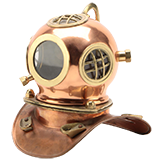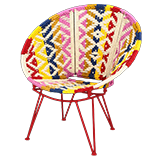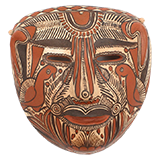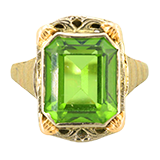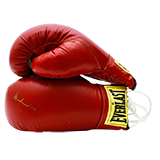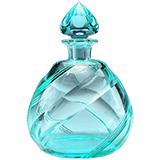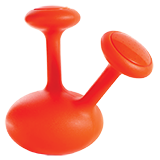Jack Bush: "Low Spread" 1974
Item Details
Jack Bush (Canada; 1909 – 1977)
serigraph on deckled edge paper
signed, dated 1974, lower left in graphite
artist proof numbered ‘VIII/XXV’, lower left in graphite
framed and under glass
Provenance
Ex Collection of critic and curator Kenworth Moffett (1934-2016) and Lucy Baker (b. 1955)
Descended in the family to the current owner
Literature
Examples of the Totem series are present in the monograph ‘Jack Bush’ published by Hudson Hills Press, New York 1984, p.174 – p.180. A copy of this monograph is included with the work offered here.
An artist proof serigraph on deckled edge paper titled Low Spread by highly regarded color field artist Jack Bush (Canada; 1909 – 1977), published in 1974. This vibrant work depicts an irregular image comprised of contrasting blocks of color and feathered edges rendered within a textured field. The work is signed, dated, and numbered for the eighth of 25 proofs by the artist’s hand in graphite to the lower left corner.
This work was likely a direct gift from the artist to American curator and art historian Kenworth Moffett (1934-2016), who specialized in abstract expressionism and color field painters. Moffett, exhibited a collection of Jack Bush’s work to inaugurate the contemporary galleries of the Museum of Fine Arts, Boston (1972) during his tenure as curator, and he also contributed with the complete monograph on Bush published in 1977 by Hudson Hills Press, Ink. In all likelihood, both critic and artist shared a close relationship.
This piece is an example of Bush’s Totem series, which spanned from the year 1973 through 1974. Bush created this series as an experimentation and battle to achieve the ideal balance between ground and figure. As explained by writer and curator Charles W. Millard, ‘If the shapes were small, weak, or too congruent with the striated ground application, or if the colors were too dull, they were in danger of being swallowed up by the ground, a deficiency that Bush almost always managed to avoid’. The artist successfully generates a conjunction of horizontal blocks of color placed in an assertive juxtaposition, where the interactions among shape and field create an extremely visually active composition.
Jack Bush is best known for being one of the leading exponents of abstract art and color field painting during the mid-20th century. He was widely celebrated for becoming the first Canadian artist that transitioned from an aesthetic bond with two groups- the Canadian Group of Painters and Painters Eleven- to an even stronger association with modernist abstraction and color field painting.
Jack Bush was born in Montreal, Canada in 1909. He began his formal artistic training as an apprentice in his hometown at the Art Department of the Rapid Grip Company in Montreal. At 17 years old he took classes under the teaching of the artist Adam Sheriff Scott (1887–1980) and posteriorly he went on to study at the Art Association of Montreal with Edmond Dyonnet (1859 – 1954). He further pursued his artistic career and moved to Toronto, refining his technique while working as a commercial artist and continuing his education at the Ontario College of Art, working under the likes of renowned Canadian artists John William Beatty, Charles Comfort, and James Edmund Hervey MacDonald, artist that was part of The Group of Seven, society of influential Canadian landscape painters from 1920 to 1933.
After discovering abstract art in Toronto and at the MOMA, New York, he got immerse into abstraction and experimentation in the early 1950s. Consequently, Bush integrated the association of Painters Eleven, a Canadian group of abstract painters founded by William Ronald in 1953. During one of this group’s exhibitions, Bush got to meet American art critic Clement Greenberg, a figure that would provoke a great impact during the second half of his career. Greenberg became a mentor and friend to Bush and guided him to find his maximum potential, liberating his artistic approach. Under Greenberg’s tutelage, Bush established a solid relationship to Color Field Painting, leading him to an association and friendship with renown color field artists like Kenneth Noland, Jules Olitski, William Perehudoff, and Anthony Caro.
Condition
- minor toning and warping to paper; minor wear to frame.
Dimensions
- measures the frame; plate size measures approximately 29" W x 21.5" H; sheet size measures approximately 35" W x 26" H.
Item #
17DET014-016















